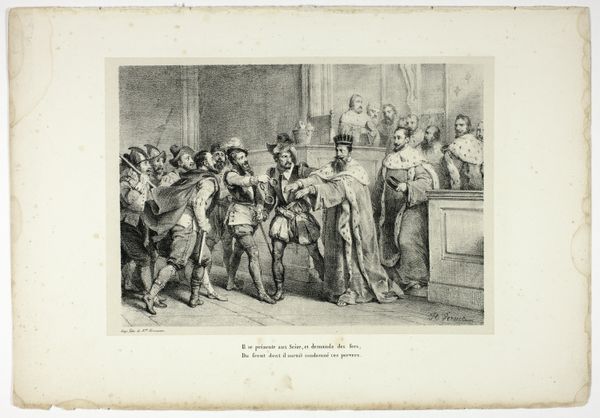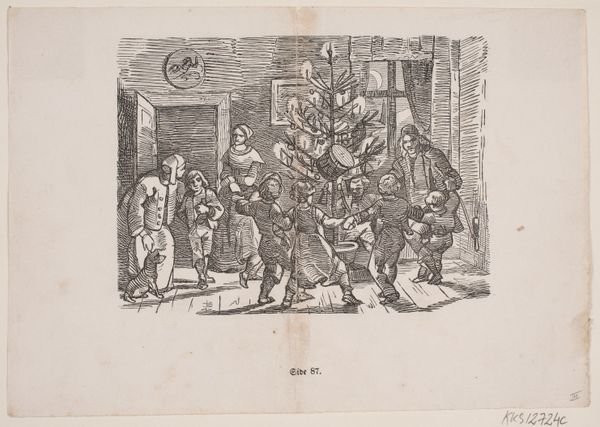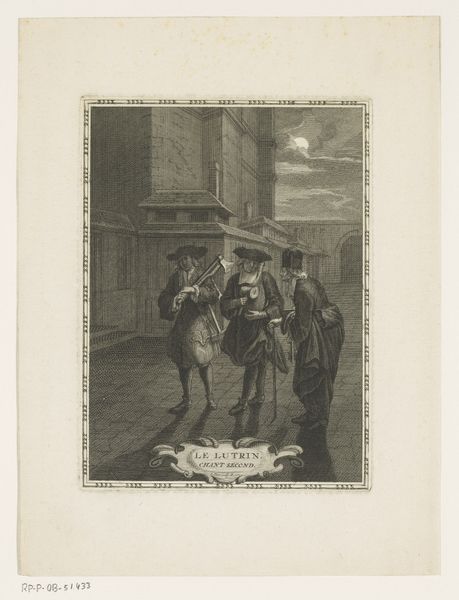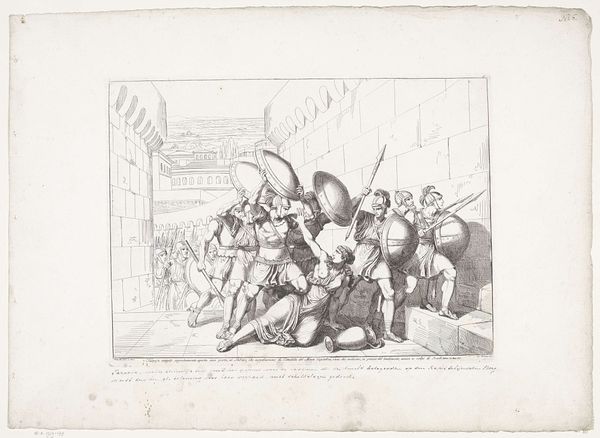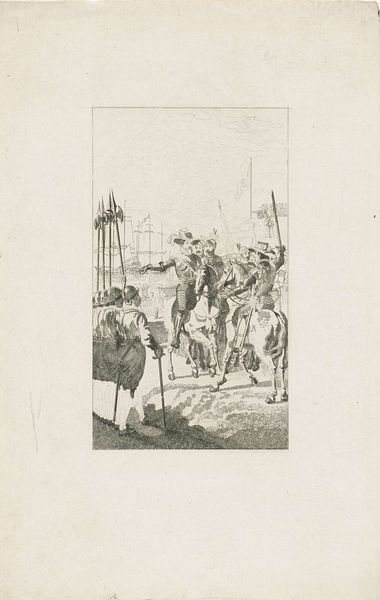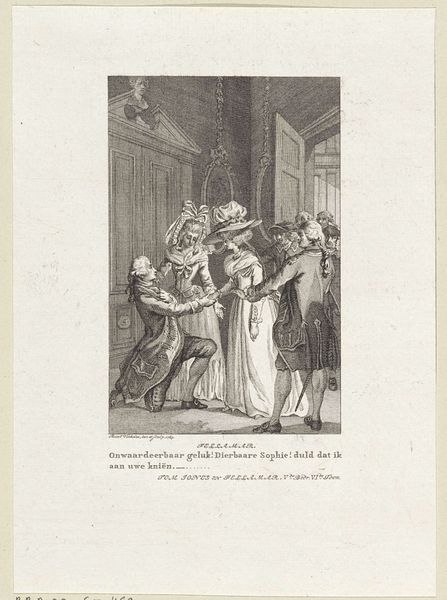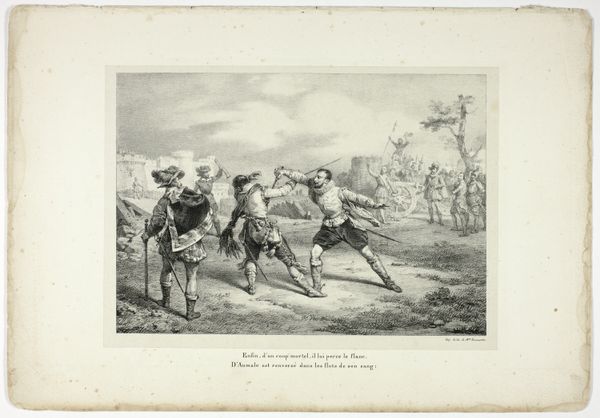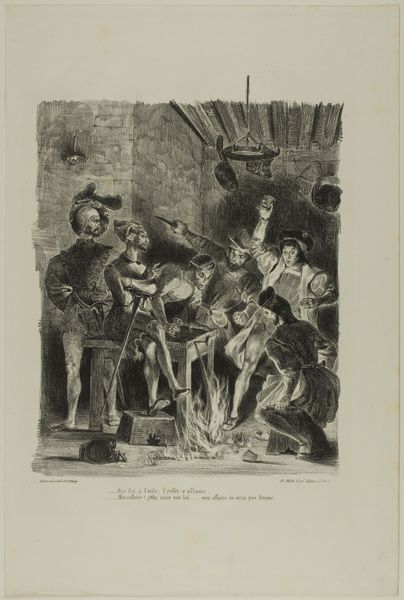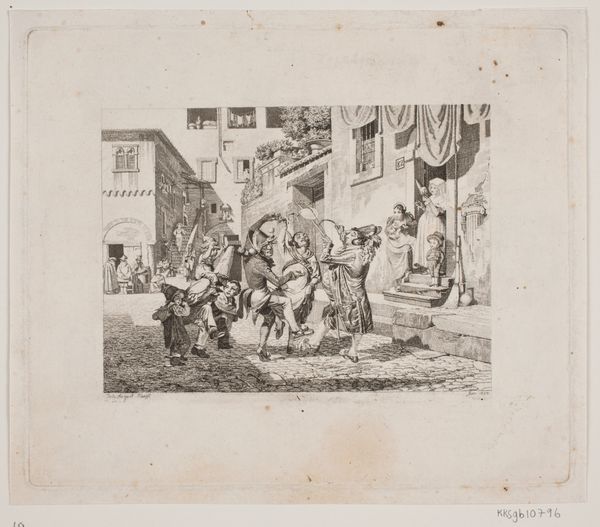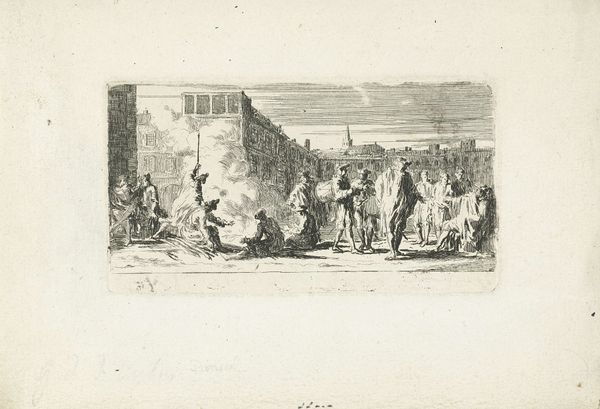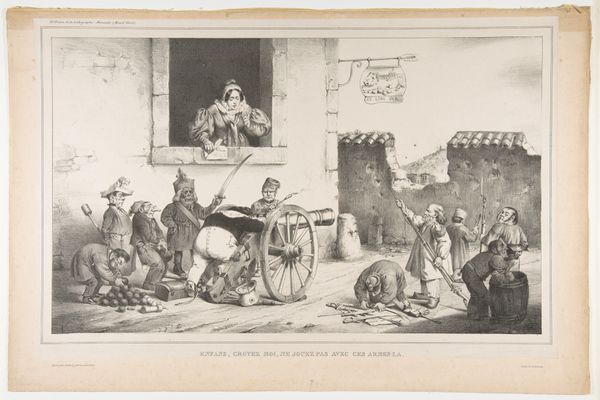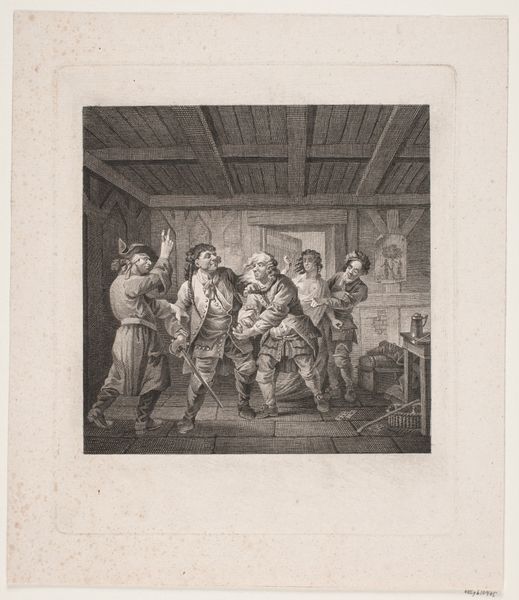
drawing, lithograph, print, etching, paper, engraving
drawing
narrative-art
lithograph
etching
figuration
paper
romanticism
history-painting
engraving
realism
Dimensions 191 × 262 mm (image); 204 × 273 mm (primary support); 287 × 414 mm (secondary support)
Horace Vernet created this print, "Et bientôt dans le flanc ce monstre furieux…," using etching and engraving. Look closely and you’ll see that the intricate details of the scene – the textures of clothing, the expressions on faces, the light and shadow – are all created through tiny, deliberate lines cut into a metal plate. Engraving is an exacting process. The artist uses a tool called a burin to carve lines directly into the metal. Etching, on the other hand, involves covering the plate with a protective coating, scratching the design into the coating, and then exposing the plate to acid, which bites away the exposed metal. The combination of the two techniques allowed Vernet to achieve a wide range of tones and textures. Prints like this were an essential means of distributing images, helping artists like Vernet reach a wider audience. It’s important to remember that these were not simply reproductions, but original works of art in their own right. Appreciating the craft and skill that went into their making encourages us to think differently about the relationship between art, labor, and social access in the 19th century.
Comments
No comments
Be the first to comment and join the conversation on the ultimate creative platform.
